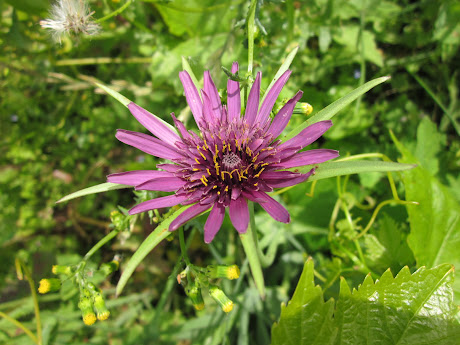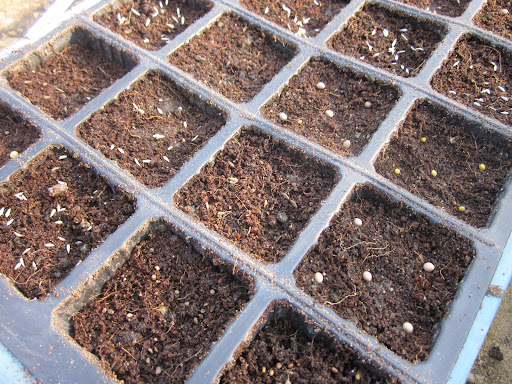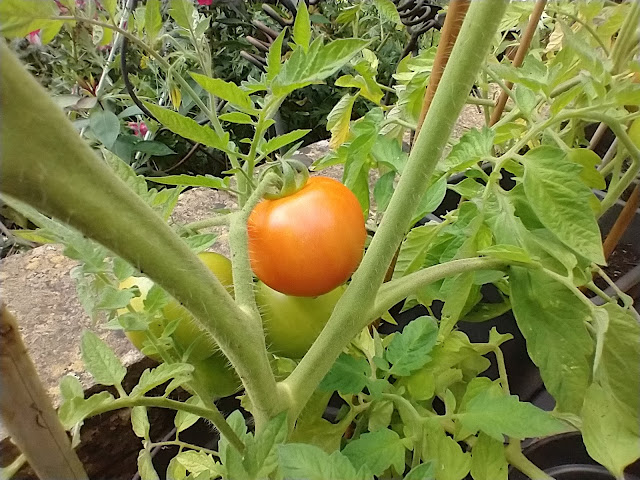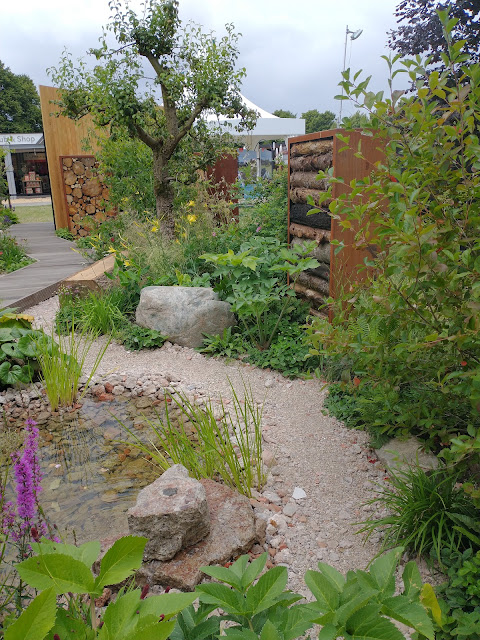OOTS: Chippenham's Double Whammy Chestnuts

Last year I told you about our horse chestnut trees in Chippenham and how leaf miner moth is bringing an early autumn to them. At the time there was some speculation that a severe winter could bring this pest to its knees. If you click on the above picture to enlarge it, you'll see the leaves on these trees are starting to go brown. This picture was taken in early August, about 6 weeks ago. Well before autumn starts round these parts.

Alas, our worst winter in 18 years hasn't killed off the moth and our trees are now looking worse than ever. The picture above shows where the moth larvae have burrowed between the upper and lower leaf surfaces and thus destroyed those parts in the process. The guidance now is to collect all the infected leaves in the autumn and burn them, so that the larvae don't emerge in the spring to start the cycle all over again.
I had pondered whether composting might do the trick, but my research shows this isn't advisable in garden situations unless you can provide very hot composting conditions to kill the moth pupae or can put a few inches of soil over the piles of leaves to stop the larvae from emerging in the spring. I could do the latter, but I'm severely limited in the amount of leaves I could collect and store. Chippenham has many stately horse chestnut trees, so re-infection from nearby would be swift to follow for any trees I did manage to clear of the pest. I suspect our local council won't have the resources to do a major leaf clearance for the hundreds of trees affected locally.

Then Threadspider told me about the state of some of the horse chestnut trees towards the top of our estate close to where she lives. I went to inspect them and the picture above shows what I found in addition to the usual leaf miner damage I've shown you already. A quick look on the internet later confirmed our suspicions: these trees have bleeding canker caused by the Pseudomonas syringae pv aesculi bacterium.


The Forest Research website* has lots of information about bleeding canker - as well as leaf miner moth* - and it looks like it may have more serious implications as the disease can kill if it girdles the whole tree, which could happen in a few years time. Horse chestnut leaf miner is not considered to be a killer, it just impacts on the tree's vigour as photosynthesis is affected from around July when severe infestation occurs. This seems to happen about 2 years after the first attack from my observations and to me it also looks like the numbers of conkers are noticeably less, thus affecting reproductive capability as well as disappointing many children wanting to have their traditional autumn conker fights.
I was feeling pretty depressed about the trees on our estate, but research for this post has thrown up some potential cheer. The RHS recently announced that treatment at Buckingham Palace* on 5 trees with both bleeding canker and leaf miner moth may lead to them being given a clean bill of health. It also appears there's a treatment based on garlic extracts on trial at the moment, which has been successful in combating bleeding canker and has the additional effect of being a moth deterrent. This treatment is expensive, but should be cheaper than the cost of cutting down and replacement with another kind of tree.
And that's not all: a wasp predator of the leaf miner moth has been found. Schoolchildren in Bristol* are helping the university to research whether this might be a suitable future treatment for trees suffering from moth infestation alone.
Now I'm waiting for someone from our local council to come and see me so we can discuss what's going to happen to our horse chestnuts. I'll keep you posted on what happens.
Don't forget Out on the Streets is all about your contributions and there's been some brilliant ones already. Just write a post about the public planting in your neighbourhood some time in September, add your link here and we'll come and visit :)
* = links no longer available.










Hi please post about the Horse Chestnuts where I live in Egham Surrey 5 beautiful tress had to be felled with what I think was the same damage. Others down our road have been reprived for the time being.
ReplyDeleteRegards
Helen
The ones on the common in Malvern look terrible this year. May contact the Malvern Conservators and ask them what they are doing about it.
ReplyDeleteI'm not familiar with horse chestnuts, but I know how I'd feel about my pecan trees suffering from the same fate. I hope they can come up with a long-term solution soon.
ReplyDeleteAside from that, I'd go with burning the leaves, just for the autumn memories it would bring back (yes, I am old enough to remember burning leaves in the fall! :D
i hope help is found in time for your horse chestnuts as they are to precious to lose (on so many levels)! new haven lost the vast majority of thier elms to disease decades ago--& resistant varieties are just now coming on board.
ReplyDeleteHeavens, those cankers almost look "sore"! I do hope they can find a way to eradicate these problems before too many more beautiful trees are lost.
ReplyDeleteWe have a couple off mature chesnuts on the lane up to the main road - both in a sad state with what I think is the leaf miner :( Working on my OOTS post and it will be up soon. May produce two this time if it's permitted :)
ReplyDeleteHelen - I think it'll more effective if you try and do something locally about your trees. Who owns the land the trees are on? If you look at the links I've provided, it should give you plenty of information to have a good chat with whoever's responsible for those trees. If they are being chopped down, then do ask what's being done to replace them. It shouldn't be the same species of tree. Good luck!
ReplyDeletePG - That sounds like a good idea. The information I've found about treatment's very new, so they might not be aware of it.
Susan - I'm hoping we can go for the long term solution and I'm also hopeful something can be done about the leaves. It all depends on my conversation with the council. We're not usually allowed to burn them!
Petoskystone - we had Dutch Elm disease here in the 1970s, it was absolutely trgaic. Terry at the Botanic Nursery has an elm tree in the nursery garden - apparently if you keep the tree below a certain heigh it won't get the disease. I believe some research is being done with the trees that were found to be resistant, so fingers crossed we can start planting with elm trees again soon.
Nancy - it doesn't look good does it. Elsewhere the bark is cracking too. I believe I 've taken pictures of the early stages of the disease :(
Anna - I hadn't realised it'd got so far north :( 2 OOTS posts would be lovely if you have the time :)